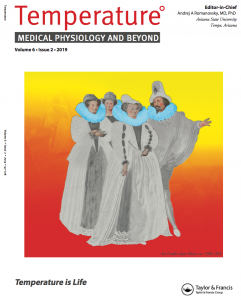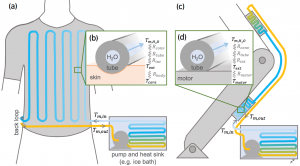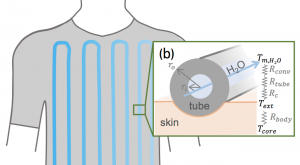The development of high performance, yet ergonomic, personal cooling garments is not only important for current medical, military, and other specialized applications, but also for adaptation of broader population to future weather patterns.
“Deadly heat waves: it’s only getting worse”, a headline from summer of 2019, succinctly summarizes recent weather and predictions on its future patterns. According to World Metrological Organization, the last couple of years have been the hottest on record and the average global temperature has increased by about 1.1°C since the industrial revolution. Disturbingly, this deceitfully mild increase is mainly due to longer periods of extremely hot weather. While there are uncertainties in climate change prediction, the consensus is that frequency and severity of such heat waves will increase significantly and will do so sooner than previously thought. Regrettably, significant warming will likely occur even if current prevention efforts are intensified. Consequently, those of us living in already hot places should begin thinking how our own, as well as future generations’, lifestyles will have to change in response to rising temperatures. In a recent editorial I argued that our social adaptation will have to involve the broad use of personal cooling garments. In our research we are trying to improve on currently existing cooling garments and are also contemplating on what the “cool future fashion” might look like. Read the free editorial here (Rykaczewski, Temperature, 2019).
As part of our project sponsored by National Science Foundation on soft heat exchangers, we applied the novel, soft thermally conductive materials that we are developing for microelectronics applications to provide transformational improvements to traditional liquid-cooled garments. We are studying effects of thermal and mechanical properties of these materials on cooling efficiency of such wearable heat exchangers as well as their use for thermal management of wearable electronics and high power robotics. In addition, we are also starting to explore improvements that could be made to cooling garments that rely on water evaporation.
Relevant publications:
Rykaczewski, K.* Cool Future Fashion: Personal Cooling as Part of Social Adaptation to Hotter Climate Temperature, (2019). (invited editorial)

Rykaczewski, K.* Rational Design of Wind and Sun Shaded Evaporative Cooling Vests for Enhanced Personal Cooling in Hot and Dry Climates Applied Thermal Engineering, 171, 115122, (2020).

Kotagama, P., Phadnis, A., Manning, K.C., and Rykaczewski, K.* Rational Design of Soft, Thermally Conductive Composite Liquid‐Cooled Tubes for Enhanced Personal, Robotics, and Wearable Electronics Cooling Advanced Materials Technologies, (2019).



